The metric system
How well do you know your metric vocab? Below are a list of prefixes used in the metric system, arranged in order of size. Can you fill in the blanks?
| trillions | billions | millions | thousands | ones | thousandths | millionths | billionths | trillionths |
| tera | mega | (none) | pico |
 Metric Quiz
Metric Quiz
To make this interactive, turn on javascript!
You already know the metric system? That's great. Below is a short quiz - if you can answer all 8 questions correctly within 4 minutes, feel free to skip this page. If not, you might want to brush up a little.
NOTE: do NOT put commas in your numbers -- the program is not smart enough to understand them!
The brain of an elephant can weigh up to 7.5 kilograms.
What is this in grams?
g
Homo sapiens have a brain volume of about 1350 mL.
How much is this in liters?
L
A mouse brain weighs about 400 milligrams.
What is this in micrograms?
micrograms
Ribosomes start at about 11 nm.
How many micrometers is this?
microns
A mitochondrion averages 0.5 micrometers across.
How much is this in nanometers?
nm
Commander Spock identifies a new strain of bacteria which averages 17.83 micrometers.
How many nanometers is this?
nanometers
The nerve cell running the length of a giraffe's neck can measure up to 3100 millimeters.
How much is this in meters?
m
in micrometers?
microns
Answers: 7500, 1.35, 400000, 0.011, 500, 17830, 3.1, 3100000
If you need to brush up...
The easiest way to convert metric measurements is to move the decimal place. Remember that metric vocab? It went like this:
tera - giga - mega - kilo - no prefix - milli - micro - nano - pico
Every time you move to the right on this list, the unit gets smaller (by 3 decimal places), so you need more of them to compensate (move the decimal place 3 to the right).
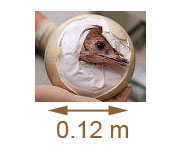
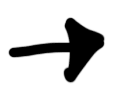

| If you turn on javascript, this becomes a rollover |
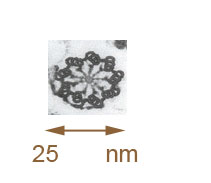

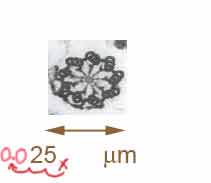
| If you turn on javascript, this becomes a rollover |
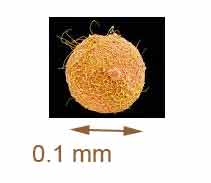

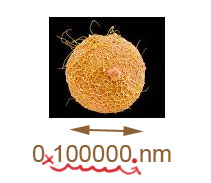
| If you turn on javascript, this becomes a rollover |
For example, a human egg is 0.1 millimeters in diameter. So, in nanometers, this is:
To summarize, remember that the SMALLER the unit, the MORE of them you need to make the same measurement, so move the decimal in the appropriate direction.
Now try the quiz again...
Copyright University of Maryland, 2007
You may link to this site for educational purposes.
Please do not copy without permission
requests/questions/feedback email: mathbench@umd.edu